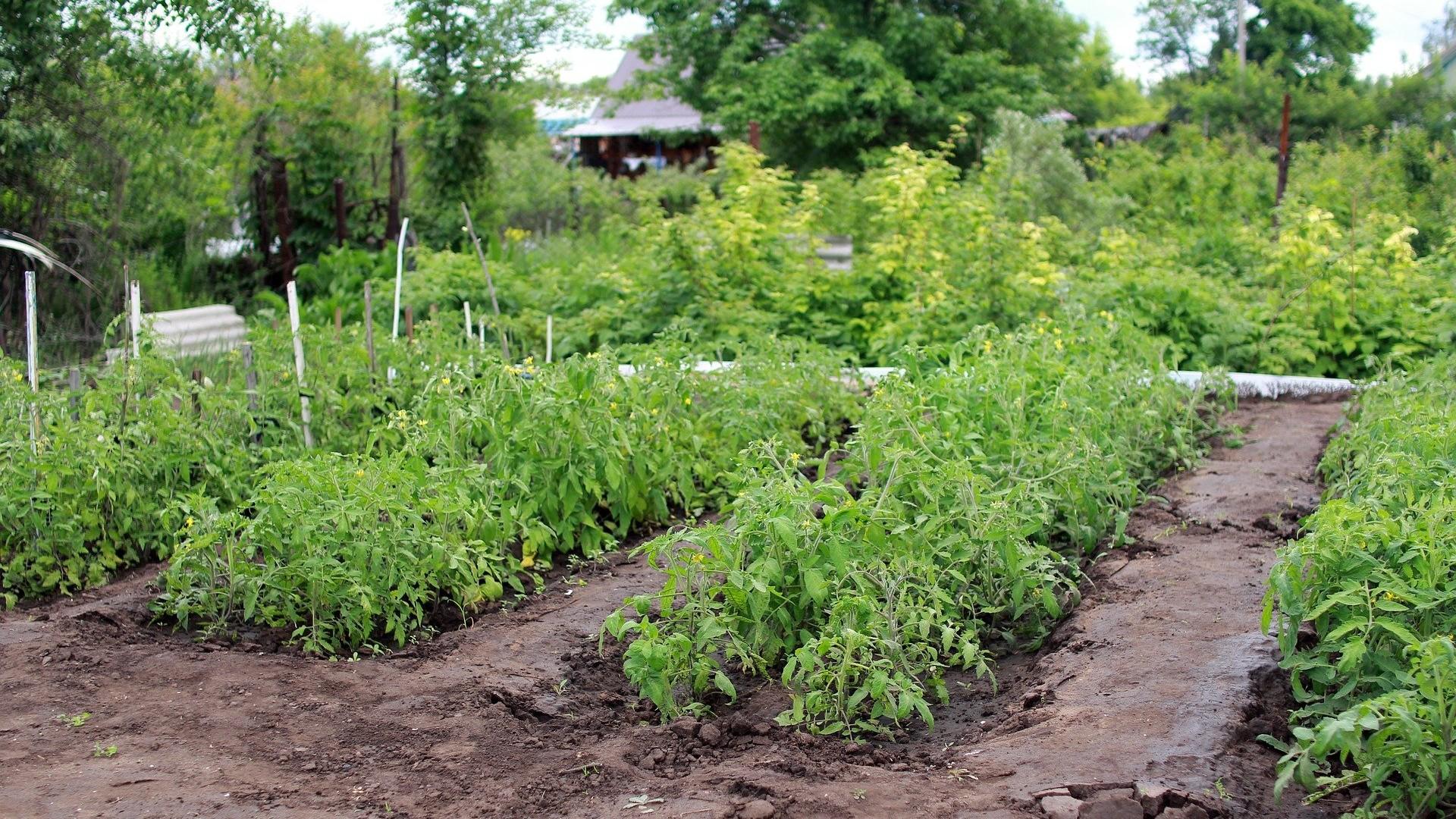Fertilizing a vegetable garden
There are not enough nutrients in your garden soil to grow strong, productive plants for the entire growing season. Your need for fertilizers will decrease in time if you add some organic matter each year. Fertilizers, whether organic or synthetic, will supply nutrients to plants when they need them. Learn more about fertilizing vegetables and by referring to the individual crop pages.
Watering a vegetable garden
Vegetable plants and fruits are 75% to 95% water. Succulence, eating quality, plant growth, and productivity are all improved when sufficient soil moisture is available:
- In general, water is most needed during the first few weeks of plant development, immediately after transplanting, and during development of edible plant parts.
- Avoid shallow, frequent watering (except for fast-growing salad greens). It encourages shallow rooting which makes plants more susceptible to drought damage.
- When hand-watering, wet the soil around the plant base. Overhead watering may encourage plant diseases but can also help cool plants and provide moisture for beneficial insects and spiders during hot, dry weather. Allow foliage to dry thoroughly.
- Soaker hoses and drip systems (drip irrigation) are highly recommended. They minimize water use and deliver water slowly and directly to the root system;
- Water in the morning when possible. Disease problems are more likely to get started overnight on cool, wet leaf surfaces;
- Adding organic matter increases a soil’s water-holding capacity. Mulches will help conserve soil moisture.


Managing weeds in a vegetable garden
Weeds are plants that grow well in disturbed environments. For most gardeners, they are simply “plants out of place.” They compete with garden plants for water and nutrients and may harbor insect and disease pests. Controlling weed growth is a key to success in the vegetable garden. Start early, as soon as weeds appear. Whenever bare soil is exposed, weeds are likely to germinate and fill that space.
- Spread organic mulches around your crops to prevent weed growth, moderate soil temperature, conserve soil moisture, and add organic matter to the soil when they rot.
- (Examples: 2 to 4 inches of grass clippings, finished compost, or newspaper covered with straw or shredded leaves.)
- Hand-pull the vigorous weeds that grow through the mulch layer. Grass clippings should be allowed to dry before you pile them around plants. Do not use any grass clippings that have been treated with an herbicide.
- Synthetic mulches come in many varieties. Black plastic mulch warms the soil for earlier, higher yields of warm-season crops. It cannot be re-used a second season. Landscape fabric warms the soil and allows water and air into the soil, and it can be re-used. Cut holes in synthetic mulches with scissors or a razor to plant seed or transplants.
- Hand-pull weeds when they are young and tender. Mature weeds extract large quantities of moisture and nutrients from the soil;
- Slice weeds off at ground level using a long-handled hoe with a sharp edge.
- Mow around your garden to prevent the spread of weeds.
- Managing Weeds Without Chemicals

Vegetable plant problems
- Monitor plants regularly for problems; check out our resources for solutions.
- Learn to take integrated pest management (IPM) approach to any plant or pest problem.
- Vegetables and herbs can be grown successfully in Maryland gardens without relying on pesticides.
Fall vegetable gardening tasks
The summer garden chores aren't over when the last tomato is picked. Putting the garden to bed in the fall will give you a jump on next year's growing season.
- Test your soil. We can't stress this enough! Adding amendments to your soil in the fall will ensure that they are available in the spring for optimum plant growth.
- Clean up the debris. Pull up all dead and unproductive plants and add it to your compost bin. Many seasoned gardeners will have already removed old plant debris and planted cover crops to protect and enhance the soil.
- NOTE TO NEW GARDENERS: Remove diseased or insect-infested plant material that may shelter overwintering states of these pests from the garden. This will reduce the potential for these disease problems from next year’s garden. This debris should be bagged and put out for the trash and not put in the compost pile. Only really hot compost piles will kill off potential problems.
- Don't leave the soil bare. Cover the soil with shredded leaves or some other type of mulch to prevent erosion. Cover crops are preferred, but shredded leaves are a good alternative. Rake leaves into a loose pile and mow over them with a lawnmower to cut them up. They will be much less likely to blow away if they are broken up. They can be worked into the soil next spring or seedlings can be planted through them. The mulch will act as a weed inhibitor.
